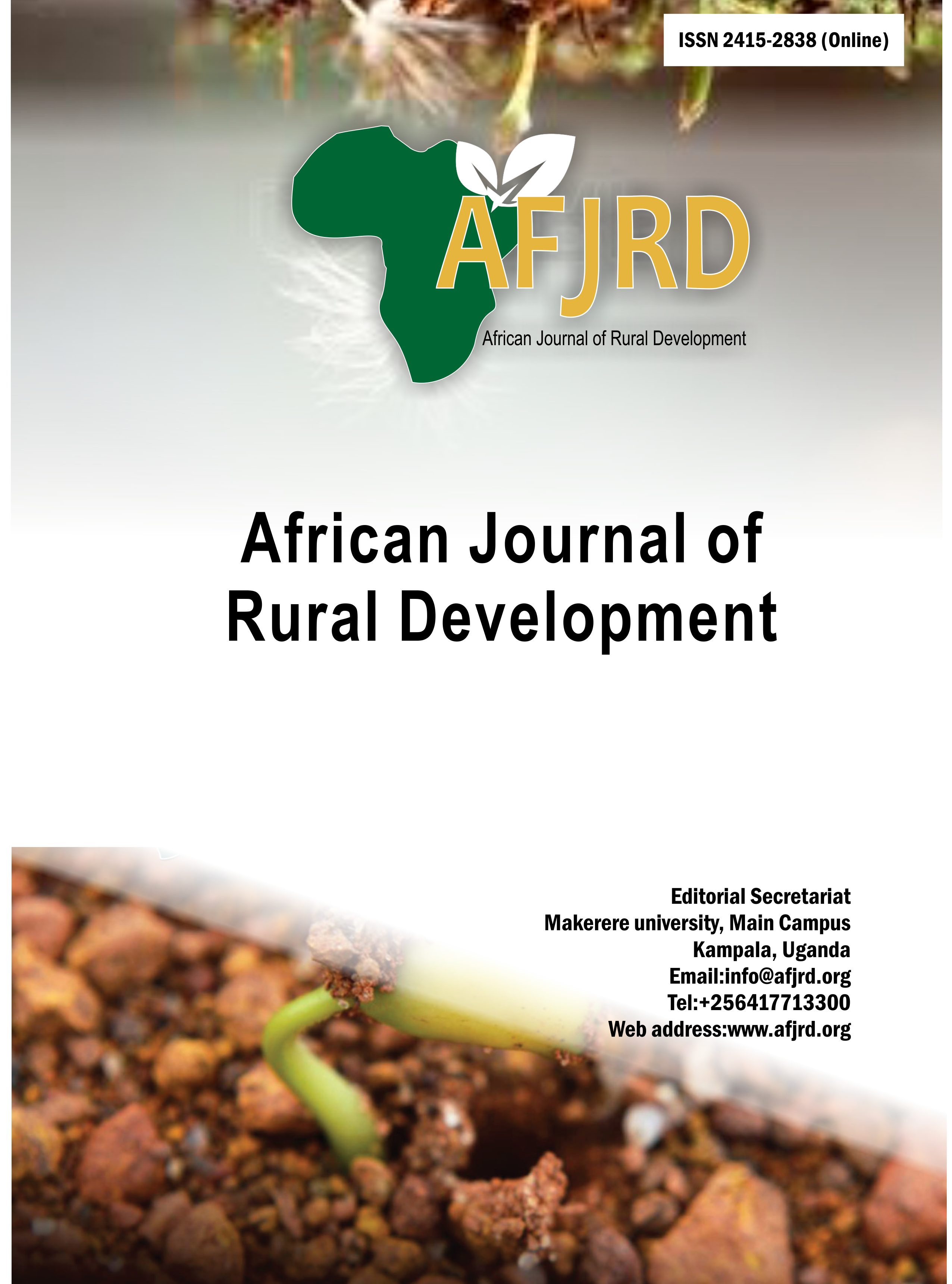Effects of Replacing Maize meal with Cassava meal (Manihot esculenta) on the Growth Perfomance of Japanese Quails (Cortunix japonica) in Malawi Effects of Replacing Maize meal with Cassava meal (Manihot esculenta) on the Growth Perfomance of Japanese Quails (Cortunix japonica) in Malawi
Main Article Content
Abstract
A 35-day study was carried out to evaluate the optimum dietary inclusion level of cassava meal in a partial replacement with maize on the growth performance of quail. Initially, 150 day-old quails were raised in the same cage for one week to allow acclimatization. On day 8, 140 quails were selected and randomly allocated to 5 treatments (0%, 10%, 20%, 30% and 40% cassava inclusion levels - CIL). Each treatment had four replicates of 7 birds in a Completely Randomized Design. Variables measured included weekly feed intake, weekly body weight, weight gain, feed convention ratio (FCR), carcass weight and dressing percentage. Feed and water were provided ad libitum. Results indicated that there was no significant difference (P>0.05) on feed intake at 0%, 10%, 20% and 30% inclusion levels. The lowest feed intake (127g/bird) was recorded at 40% cassava inclusion compared to 209g/b, 207g/b, 202g/b and 189g/b at 0%, 20%, 30% and 10% inclusion levels respectively. The weekly body weights and weight gain of quails showed no significant difference (P>0.05) at 0%, 10%, 20% and 30% CILs. Specifically, 30% inclusion level had significantly higher weight gain than the control. The most efficient FCR was calculated at 30% inclusion level. The results show that the feed intake and body weight gain at treatment 10%, 20% and 30% were no different from the control (0%). Results suggest that cassava meal can be included up to 30% of quail diets.
Article Details

This work is licensed under a Creative Commons Attribution 4.0 International License.
